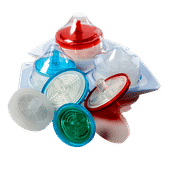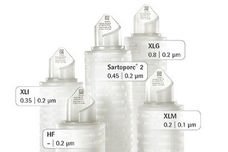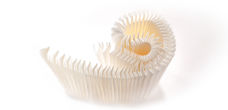Deep-frozen HIV specimens
The development of an HIV vaccine is hindered by the rapidity with which the virus mutates. A new resource available to vaccine developers is a cryobank of frozen virus specimens collected from all over the world. A mobile laboratory will soon be collecting specimens in Africa.

In their new level-3 biosafety laboratory, researchers catalog and store different HIV variants and culture viruses for supply to vaccine developers
Fraunhofer IBMT
Researchers the world over have been in hot pursuit of the HI virus since 1984, desperately seeking a vaccine - so far in vain. Unfortunately, the virus mutates so rapidly that there are a great many variants in existence. An international research consortium has set up a cryobank at the Fraunhofer Institute for Biomedical Engineering IBMT in St. Ingbert to store the different types of virus, which can be cultured for supply to vaccine researchers. It is the first facility to provide storage at minus 196 degrees Celsius for the full diversity of this highly infectious material. "Our laboratory conforms to level-3 biosafety standards," declares IBMT project manager Dr. Hagen von Briesen. "It is held at negative pressure with respect to the exterior to avoid all risk of viruses being released. All air vents are equipped with special filters that reliably trap all hazardous particles. Similar precautions apply to the door to the laboratory, which can only be accessed via an airlock." The project is being funded by the Bill & Melinda Gates Foundation (U.S. $7.5 million), the Fraunhofer-Gesellschaft (U.S. $1.2 million) and the Saarland economics ministry (U.S. $600,000). The laboratory was granted biosafety approval last September - allowing the researchers to start collecting specimens from all over the world, separate the immune cells from the plasma, grow viruses in culture, and store material in the cryobank. "The World Health Organization WHO has designated five countries that are particularly affected by AIDS - Brazil, Uganda, South Africa, Russia and Thailand - and engaged them as partners in the first phase of the project. We are helping to set up local cryogenic labs where specimens can be collected and deep-frozen for transfer to our cryobank," Briesen says.
Next year, the researchers will pilot-test a novel way of collecting HIV specimens for the cryobank in heavily affected countries, using a mobile cryogenic lab touring around South Africa. "The 13-meter truck is equipped for medical emergencies, and also contains a treatment room for patients and has its own power generation and ventilation systems. Behind this area, separated by an airlock, are a level-3 containment laboratory and a cryogenic lab," explains Briesen. Blood samples from patients are tested on the spot for HIV, as well as co-infections such as tuberculosis and syphilis. The cells and plasma are then separated and carefully frozen. The patients' test results are known immediately, allowing treatment to begin without delay. And the specimens can later be supplied to researchers around the world for closer analysis.
Other news from the department science
These products might interest you

Cell culture filtration solutions by Cytiva
Cell culture filtration products
High-performance sterile filtration for media, protein purification, and cell culture

Hahnemühle LifeScience Catalogue Industry & Laboratory by Hahnemühle
Wide variety of Filter Papers for all Laboratory and Industrial Applications
Filtration Solutions in the Life Sciences, Chemical and Pharmaceutical Sectors

Sartopore®2 by Sartorius
Effective mycoplasma removal and sterilisation
Lowest filtration costs and maximum safety for your processes

Sartopore® Platinum by Sartorius
Efficient filtration with minimal protein adsorption
Reduces rinsing volume by 95 % and offers 1 m² filtration area per 10"

Get the life science industry in your inbox
By submitting this form you agree that LUMITOS AG will send you the newsletter(s) selected above by email. Your data will not be passed on to third parties. Your data will be stored and processed in accordance with our data protection regulations. LUMITOS may contact you by email for the purpose of advertising or market and opinion surveys. You can revoke your consent at any time without giving reasons to LUMITOS AG, Ernst-Augustin-Str. 2, 12489 Berlin, Germany or by e-mail at revoke@lumitos.com with effect for the future. In addition, each email contains a link to unsubscribe from the corresponding newsletter.















































